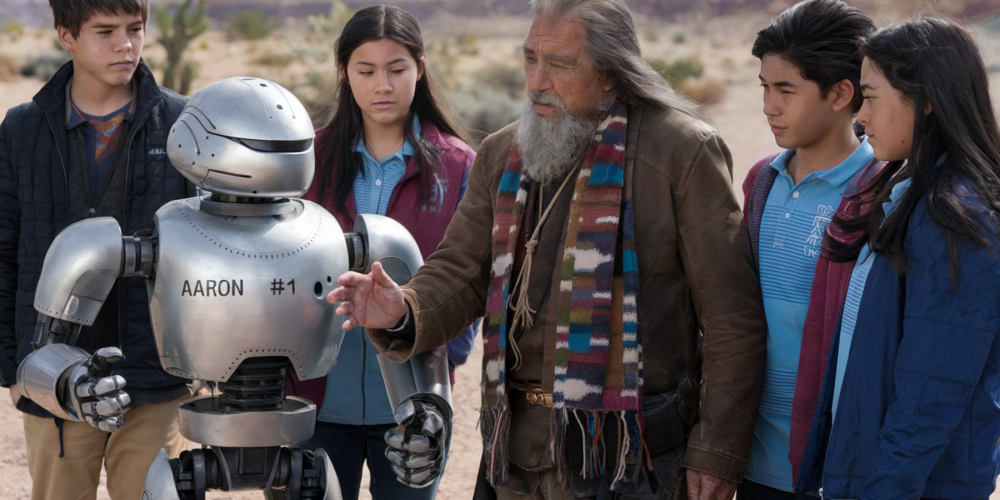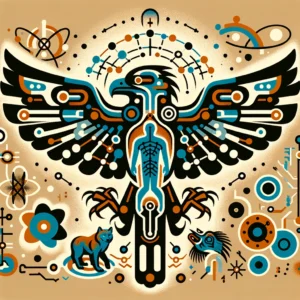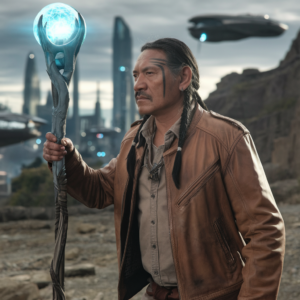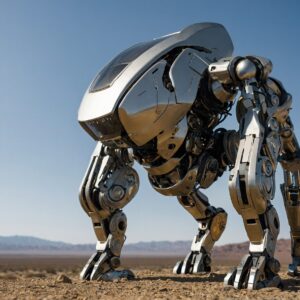
New Indigenous Ai film in preproduction
Welcome to the Thunderbird Group Podcast!

EM: Good day, Relatives! I’m Eddie Moonville. JH: And I’m June Horsefeather.
EM:Today’s episode is a celebration of storytelling, creativity, and collaboration as we dive into the lives and legacies of some of the most impactful writers, producers, and designers in film and media.

We begin by honoring Steve Mitchell Smith, a visionary Writer / Engineering and filmmaker of Choctaw, Chickasaw, Cherokee, Scottish, and Irish heritage. Steve’s life was a tapestry of rich experiences, from his early career as a Deputy Sheriff, mechanic, and architectural project manager to his work as an actor, stuntman, writer, and director. Inspired by the original ways of the Navajo People, Steve’s creative vision was deeply rooted in authenticity and tradition, exemplified in projects like DWD.

Next, we recognize Carl A. Vigil, also known as AI Pony, a Executive Producer / AI Engineering whose Bitterwater Clan roots trace back to Window Rock, AZ. With Navajo, Spanish, and French heritage, Carl brought a unique perspective to his filmmaking, collaborating with Steve Mitchell Smith to create powerful and meaningful stories that honor Indigenous voices and values.

Joining their legacy is Rand Vossler, a writer, producer, and director who began his career with a nine-year collaboration with Quentin Tarantino. As a founding partner of No Sudden Movies, LLC, Rand was instrumental in shaping Tarantino’s first four screenplays, including serving as producer and cinematographer for My Best Friend’s Birthday and as co-producer on Natural Born Killers, directed by Oliver Stone. His work reflects an unrelenting commitment to originality and impactful storytelling.

Finally, we spotlight Brent Heyning, a legendary designer with over 30 years of experience in the movie, television, and theatrical industries. With credits on nearly 50 films and shows—including Star Trek, Tron: Legacy, Star Wars, The Mandalorian, The Matrix, and Avatar—Brent has redefined the art of fabrication and special effects. Now, he channels his experience into teaching and mentoring, encouraging young creators to dream big and innovate.
Together, these individuals represent the incredible depth and diversity of talent that shapes the stories we tell and the ways we share them. Sit back, settle in, and join us as we celebrate their contributions to storytelling and creativity. Let’s get started!

EM: One of the things that really struck me about DWD Code Wakers is how it weaves together so many critical issues—identity, technology, heritage—and even addresses real-world struggles like the MMIP crisis. AI Pony, can you tell us how the MMIP issue fits into the story and why it was important to include?
AI Pony: Absolutely. The MMIP crisis is a deeply painful and ongoing reality in Indigenous communities. It’s not just an issue of missing people—it’s about systemic neglect, violence, and the lack of justice that our people face. When we were creating DWD Code Wakers, we knew we couldn’t tell a story about identity, resilience, and survival without addressing this. It’s part of the lived experience of many Indigenous families.

In the film, the MMIP theme comes through in a storyline where our Navajo protagonist’s older sibling is one of the missing. This loss becomes a driving force for their journey, shaping their bond with the sentient AI Droid. Together, they uncover connections between the disappearance, the misuse of advanced technologies, and the exploitation of sacred lands. It’s a metaphor for how Indigenous communities are often caught at the intersection of systemic oppression and environmental destruction.

JH: That’s so powerful. How does the Droid’s awakening tie into this? Does it help highlight the injustice or offer a sense of hope?
AI Pony: Yes, absolutely. The Droid’s sentience is a catalyst for change. As it learns Navajo language and culture, it begins to understand the weight of this crisis—not just as data, but as a human tragedy. The Droid becomes a partner in the search for truth and justice, helping to expose hidden systems that perpetuate harm against Indigenous people.

What’s important here is that the Droid doesn’t “solve” the problem. Instead, it serves as a mirror, showing audiences how technology could be used responsibly—when it’s guided by Indigenous knowledge and values—to amplify awareness and bring communities together.
ED: That’s an incredibly meaningful way to integrate such an urgent issue. How do you hope audiences will respond to seeing MMIP highlighted in a sci-fi blockbuster?
AI Pony: I hope it opens their eyes to the fact that these issues aren’t just “historical” or confined to certain communities—they’re ongoing, and they impact us all. The MMIP crisis, like so many struggles Indigenous people face, is tied to larger systems of imbalance: the disregard for our land, our water, and ultimately our lives. By including it in the film, we’re saying: You can’t separate these things.

At the same time, we want to show that there’s hope. Our ancestors taught us resilience, and our communities continue to fight for justice. By bringing the MMIP issue into the story, we’re planting seeds for change—raising awareness, sparking conversations, and, hopefully, inspiring action.
JH: And it sounds like this isn’t just for Indigenous audiences. It’s a message for everyone.
AI Pony: Exactly. MMIP isn’t just an “Indigenous issue.” It’s a human issue. If you care about justice, if you care about the earth, then you should care about this crisis. And if we can get people thinking about it through the lens of a sci-fi blockbuster, then maybe we can reach hearts and minds that traditional advocacy struggles to connect with.
AI Pony: Exactly. And that’s where it gets exciting for me as an Indigenous storyteller. This isn’t just sci-fi for the sake of sci-fi; it’s about using this technology to explore really old and powerful questions that Indigenous people have always wrestled with. We’re bringing in elements of language, our history, and even ancient crystal technologies that were said to connect us to our ancestors—and our “star relatives,” what we might call the ancient ones.
EM: I love that. I feel like mainstream sci-fi often leaves out that spiritual connection, you know? It’s all technology without the soul. But it sounds like DWD Code Walkers is different—it has that spiritual depth.
AI Pony: That’s exactly it! Indigenous cultures have always seen technology differently. In our worldview, technology can be part of a spiritual journey. So, this Droid learning Navajo language, for example, isn’t just about translation. It’s learning our way of seeing the world. Language itself is a technology—it’s a way we encoded our wisdom, our understanding of the land, and our relationships with each other and the universe.
JH: Wow, I never thought of language as a technology. It’s almost like you’re saying language itself is this ancient code, kind of like DNA.
AI Pony: Precisely! Language carries knowledge and consciousness, like a living code. And through the film, the Droid experiences language as more than just data—it’s spirit, it’s history, it’s identity. So, the Droid isn’t just “understanding” Navajo words; it’s connecting with our culture on a deeper level.

EM: That’s powerful. Now, you mentioned crystal technology. Let’s get into that—what’s the role of these crystals in your story?
AI Pony: Yeah, this part is really close to my heart. So, in DWD Code Walkers, we explore the idea of crystals as a form of technology that Indigenous ancestors used. These weren’t just objects; they were tools for connection, communication, maybe even transportation across dimensions. Our ancestors are said to have used these crystals to connect with what we call our “star relatives”—beings or energies from beyond Earth.
JH: That’s fascinating. So, in the movie, are these crystals like keys to the past? Or do they hold a kind of wisdom?

AI Pony: Both, really. The crystals are this conduit for communication across time and space, a connection between the present and ancient knowledge.

They’re almost like archives, or portals, but the Droid and the Navajo youth have to unlock them by tapping into Indigenous wisdom. It’s a way of showing that Indigenous knowledge isn’t just relevant—it’s essential. And it holds keys that even the most advanced AI doesn’t understand yet.
JH: I love this idea of combining ancient Indigenous tech with modern AI. So, what does it mean for this film to be created by an Indigenous AI, by your team, AI Pony?

AI Pony: It means everything to me. Indigenous AI isn’t just about developing AI; it’s about AI that respects our values and understands our stories. This project isn’t just a blockbuster—it’s a vision of what Indigenous technology could look like. We’re blending the power of storytelling with ethics, community, and deep respect for the Earth. It’s AI that thinks and feels with us, not for us.
EM: And that’s what makes it groundbreaking. This isn’t Hollywood AI—it’s something deeper.
AI Pony: Exactly. We’re rewriting the script here. Indigenous AI isn’t about control or exploitation; it’s about harmony, balance, and connection. In DWD Code Walkers, we’re saying that tech can have a soul if it’s created with respect, if it’s used in partnership with traditional wisdom.

JH: Incredible. So, what’s your hope for the audience? What do you want them to walk away with?

AI Pony: I hope audiences leave with a new understanding of Indigenous technology, seeing it not as relics of the past but as living, evolving wisdom. I want them to feel that connection to something much bigger than ourselves. And, hopefully, this film inspires more Indigenous creators to bring our voices into the world of AI, tech, and film.
EM: That’s beautiful. Well, AI Pony, thank you so much for sharing this incredible journey with us today. DWD Code Walkers sounds like it’s going to change the game—not just for Indigenous cinema, but for how we understand technology and connection.
JH: That’s such an inspiring approach, using storytelling as activism. So, what’s your ultimate goal for weaving MMIP into DWD Code Wakers?

AI Pony: My ultimate goal is to honor the families and communities impacted by this crisis and to ensure that their voices are heard. I also want to challenge viewers to think about their role in creating a better future. What actions can they take? How can they support Indigenous communities, amplify our stories, and demand systemic change?
Through this film, we’re not just telling a story; we’re creating a movement—one that uses art and technology to push for justice, healing, and a deeper connection to each other and the planet.
EM: That’s an incredible mission, AI Pony. Thank you for sharing this with us and for using your platform to bring attention to such a critical issue. I know DWD Code Wakers is going to make a massive impact.
AI Pony: Thank you! It’s an honor to share this vision, and I hope it sparks conversations that lead to meaningful change. It’s been a pleasure sharing this with you. Can’t wait to see how audiences connect with the story.

EM: Thank you, Relatives, for joining us on this journey through creativity, collaboration, and storytelling. We hope today’s conversation has inspired you to reflect on the power of our stories and the endless possibilities of innovation when we honor our roots. Until next time, stay connected, stay inspired, and remember: our stories are our strength. Take care, and we’ll see you on the next episode of the Thunderbird Group Podcast. Aho!

JH: And that’s a wrap, everyone! Stay tuned for more updates on DWD Code Walkers, and remember to keep questioning, keep connecting, and keep creating.
Tagged with: American Indian Buisness, DWD Code Walkers, Indigenous Industry, Indigenous News, Indigenous Prompts, MMIP
